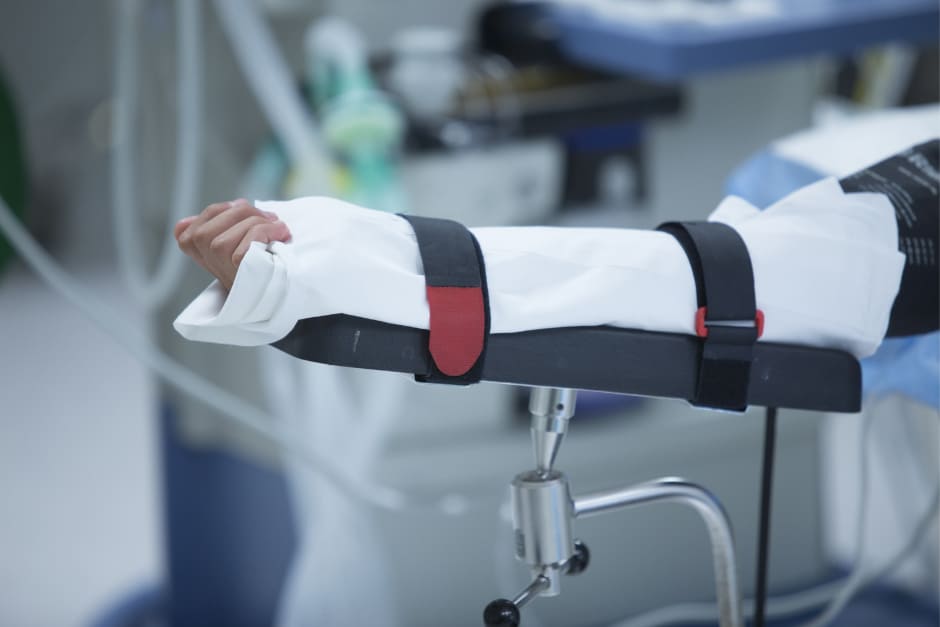The article describes in detail the approach to be applied with respect to non-clinical bench testing medical devices should undergo in order to collect necessary safety data to support the relevant claims included in the premarket submission.

Table of content
The Food and Drug Administration (FDA or the Agency), the US regulating authority in healthcare products, has published a draft guidance document dedicated to the characterization of metallic coatings and/or calcium phosphate coatings on orthopedic devices.
Once finalized, the document will provide an overview of the applicable regulatory requirements, as well as additional clarifications and recommendations to be considered by medical device manufacturers and other parties involved to ensure compliance.
At the same time, provisions of the guidance are non-binding in their legal nature, nor are they intended to introduce new rules or impose new obligations.
Moreover, the authority explicitly states that an alternative approach could be applied, provided such an approach is in line with the existing legal framework.
It has been agreed with the authority in advance.
In particular, the document provides extensive clarifications on non-clinical bench testing to be conducted by the responsible parties before applying for marketing approval.
The document outlines the scope of testing to be undertaken and also provides additional clarifications regarding the way the results of such testing should be presented in the submission.
General Recommendations for Non-Clinical Bench Testing
The relevant section of the guidance underscores the importance of conducting thorough non-clinical tests to assess the integrity of coatings on medical devices, specifically metallic and calcium phosphate coatings.
According to the guidance, inadequate coating integrity poses risks of device failure and clinical complications, such as poor fixation.
As explained by the FDA, a submission should contain a detailed description of the test sample and a minimum recommended sample size for each test, together with the quantitatively expressed test results and discussing conclusions drawn from these outcomes.

Testing of Metallic Coatings
The document outlines the recommended bench tests for characterizing metallic coatings, including chemical analysis, microstructural characterization, and mechanical testing.
It details the significance of each test, such as the impact of chemical composition on stability and biological response, and how microstructure influences implant fixation. Recommendations the guidance contains include providing chemical composition analysis, evaluating microstructural features like porosity, and conducting mechanical tests to assess strength and abrasion resistance.
The document also mentions specific standards and criteria for these evaluations.
Testing of Calcium Phosphate Coatings
Part of the guidance focuses on the recommended tests for evaluating calcium phosphate coatings, highlighting the importance of physicochemical analysis, microstructural characterization, and mechanical testing. It discusses the significance of physicochemical properties for coating stability and biological response, recommending specific analyses to assess elemental composition, phase analysis, Ca/P ratio, and dissolution rate.
As explained by the FDA, the microstructural evaluation aims at understanding the coating’s interface with bone/tissue, and mechanical testing assesses the coating’s integrity under various stresses.
Testing of Metallic and Calcium Phosphate Dual Coatings
This section recommends a combination of tests outlined in the previous segments to address the unique considerations for devices with both metallic and calcium phosphate coatings.
It suggests additional processing details, testing for each coating type, and evaluating the dual coating’s microstructure and mechanical properties.
The authority focuses on ensuring that the dual coating meets the necessary standards for biological fixation and performance.
Coated Substrate/Device Testing
The document also provides additional recommendations and clarifications for evaluating the coated substrate/device itself, considering the potential impact of the coating process on the device’s physical, chemical, and fatigue properties.
It recommends comparative physical and chemical testing, as well as fatigue testing, to assess any changes or effects introduced by the coating process.
This includes examining the substrate before and after coating and testing both non-coated and coated specimens to quantify the coating’s impact on the substrate’s performance.
Conclusion
In summary, the present FDA draft guidance outlines the critical aspects of non-clinical bench testing for coatings on medical devices. The document specifies the testing to be conducted by the responsible parties and also explains how the information (test results) should be presented.
How Can RegDesk Help?
RegDesk is a holistic Regulatory Information Management System that provides medical device and pharma companies with regulatory intelligence for over 120 markets worldwide. It can help you prepare and publish global applications, manage standards, run change assessments, and obtain real-time alerts on regulatory changes through a centralized platform. Our clients also have access to our network of over 4000 compliance experts worldwide to obtain verification on critical questions. Global expansion has never been this simple.
Want to know more about our solutions? Speak to a RegDesk Expert today!
–>
- SEO Powered Content & PR Distribution. Get Amplified Today.
- PlatoData.Network Vertical Generative Ai. Empower Yourself. Access Here.
- PlatoAiStream. Web3 Intelligence. Knowledge Amplified. Access Here.
- PlatoESG. Carbon, CleanTech, Energy, Environment, Solar, Waste Management. Access Here.
- PlatoHealth. Biotech and Clinical Trials Intelligence. Access Here.
- Source: https://www.regdesk.co/fda-draft-guidance-on-metallic-or-calcium-phosphate-coatings-non-clinical-bench-testing/



